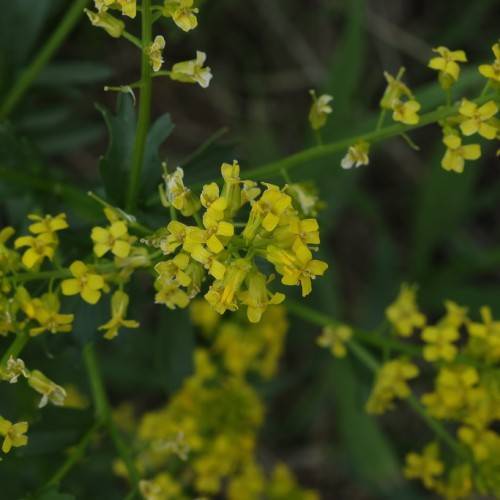
American Yellowrocket
Barbarea orthoceras
Also Known As - American WintercressWatering:
Minimal
Hardiness Zone:
Sun:
full sun,part shade
Leaf:
Yes
Growth Rate:
Low
Drought Tolerant:
Yes
Salt Tolerant:
Yes
Invasive:
Yes
watering
American Yellowrocket needs to be watered deeply, about once a week during the growing season. During times of drought, the plant should be given more attention because it may not receive the moisture needed from rainfall. In order for the plant to have healthy growth, it is important to provide enough water to reach the root zone. Before complete wilting occurs, the soil around the plant should be watered thoroughly, as much as a 1-2 inches of water at 1 time. To make sure the soil is dampened all the way to the roots, water once more to ensure complete saturation. When the soil begins to dry out, water again. Too much water can be harmful, so be mindful to not overwater.
sunlight
American yellowrocket typically blooms during early spring and prefers full sun in order to receive the optimum amount of sunshine. This plant will generally thrive in areas that receive 8 to 10 hours of direct sunlight in 1 day and can tolerate slightly more or less light depending on its location. In areas with long growing seasons and plenty of sun, the American yellowrocket will flower for an extended period of time. However, if planted in an area that receives primarily shade, the American yellowrocket will likely not bloom.
pruning
American Yellowrocket should be pruned once a year in late spring or early summer. Pruning should be kept to a minimum in order to preserve the beauty of this plant. Remove any dead or damaged stems and trim back straggly branches to encourage new growth. For American Yellowrocket, the goal of pruning should be balance and symmetry, rather than creating a specific shape or form. This species may also benefit from deadheading flowers, which will encourage more blooms to develop and help the plant look its best.
